Linda Shropshire has created a new space to showcase the work of under-represented artists on a historic block in Durham.
by Colony Little | Photographs by Morgan Crutchfield Photography, courtesy Ella West Gallery
In downtown Durham, a red brick-lined road leads to a pocket park at the corner of Orange and Parrish Streets. Here, a small garden, sculptures, and bright green swing chairs suspended from a wooden pergola overlook an enlarged bronze replica of a vintage copper penny.
The historical marker is one of six monuments along Parrish Street that commemorates one of the most prosperous Black Wall Streets in the nation. Next to the park a brick building built in 1908 that bore witness to the economic evolution of Black Wall Street is now the home of Ella West Gallery, whose founder is writing a new chapter of Parrish Street’s history.
Ella West Gallery is the brainchild of Linda Shropshire, an arts advocate, collector, former Fortune 100 executive, and current member of the Board of Trustees at the NCMA. With a commitment to honoring the rich heritage of Black creative expression in the triangle, the goal of Ella West is to serve the communities of artists and collectors that call North Carolina home.
“I envision Ella West Gallery as a space that recognizes Black, brown, LGBTQ+, and women artists who have not always been represented proportionally in the canon of art history,” said Shropshire during the gallery’s opening weekend in August.
The gallery will create a platform for both established and emerging diverse artists while providing triangle-based collectors access to local and internationally known talent. Ella West officially opened on August 19th with its inaugural exhibition titled, Return to Parrish Street: A Dream Realized. The show features new work from North Carolina artists Kennedi Carter and Clarence Heyward, with additional works created by Ransome added on September 11. There’s an intergenerational theme present among the artists and their work in the show.
Carter’s reverent photographs of motherhood are grounded in a broader, universal state of nurturing that takes shape in different forms: from sage Black women elders, to a child caring for a beautiful horse, or a young girl finding sublime delight in the billowing breeze of a clothes line on a hot day. Meanwhile, portrait artist Clarence Heyward explores the Black American experience from a deeply personal and sociological perspective.
He continues to present his subjects in green hues that are reminiscent of chroma key, pairing their likenesses with titles that serve as thought prompts that challenge viewers to interrogate their own perceptions around race and class. Born and raised in North Carolina, mixed media artist Ransome centers his family lineage in paintings that combine figurative and abstract renderings of the black family and their role within the social fabric of the United States.
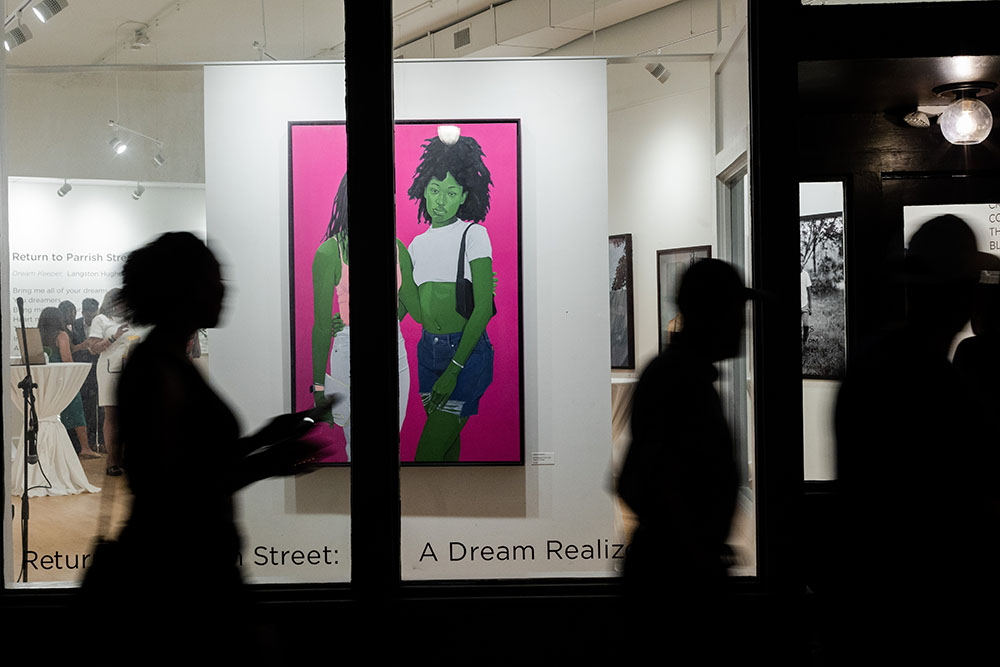
Ella West Gallery is located in the historic Clements building, which housed one of the newspapers of record for Black Wall Street, the Durham Reformer. “We stand on the shoulders of the dedicated forebearers that built this celebrated community,” says Shropshire.
In the early 1900s, Parrish Street was anchored by the African-American owned North Carolina Mutual Insurance Company and the M&F Bank, while additional businesses including Black barber shops, doctors offices, clothing retailers, and grocery stores lined the 4-block enclave that W.E.B. Du Bois praised in his 1912 essay, “The Upbuilding of Black Durham,” as a model of financial and social independence.
Black Wall Street’s influence buoyed neighboring communities including Hayti, Southside, and the Bottom, however when the economy collapsed during the Great Depression, so did the financial outlook for Black Wall Street.
Furthermore, Jim Crow laws codified a widening economic and social divide that would open the door to “Urban Renewal” initiatives enacted in the late 1950s that would have a deleterious effect on the community. “With the vanishing of historic Black institutions, the energy of Black excellence they embodied was dispersed and seemingly lost,” says gallery guest Holly Ewell-Lewis. “Ella West has reclaimed it and re-anchored it.”
For Lewis, the gallery is a sign of possibility. “It felt so much more than the art,” she says. “I think it will inspire others to join in the rebuilding of Black excellence. It’s a healing, but also a beacon of hope and remembrance, pointing the way, reminding us of our true selves.”
This dual sense of remembrance and possibility lies at the foundation of the gallery. Ella West is named after Shropshire’s mother, who is now 83 years old and lives in Charlotte. In a dedication speech, she shared some of the valuable lessons she learned from her: “As a single mom, she taught me so many important things: respect for elders, responsibility, hard work, and, as an owner of her own hair salon, she taught me how to be an entrepreneur.”
In Shropshire’s gallery office, a framed photograph of her mother takes pride of place on a wall above her desk. In the photo, she wears a proud smile on her face as she tilts her head lithely to the side, “ most of all,” says Shropshire, “she taught me and my late brother how to love; she taught me that love really does make the world go around. I hope that the sign that bears her name is a flag for love–love of people, love of our ancestors, our history, our art, and the special spark that God placed within each of us.”
As Shropshire greeted guests during the packed opening weekend festivities, that love was palpable. Carter and Heyward were on hand, in addition to special appearances by some of the subjects featured in their respective work. One such guest was a young woman named Jaelle, whose portrait is prominently featured in the show: in the photograph she appears to be daydreaming in front of a billowing white sheet on a clothesline, her eyes closed and her arms crossed gracefully above her head. In the gallery she was all smiles when she walked in and found her picture on the wall.
Dawn Booker, owner of Pack Light Global asked the young lady, “How does it make you feel, what do you see?” She replied, “It feels natural.” Recalling that moment, Dawn smiled broadly, “we all just couldn’t believe that she said what all of us were thinking. It was perfect.”
This article was originally published on September 5, 2023 on waltermagazine.com

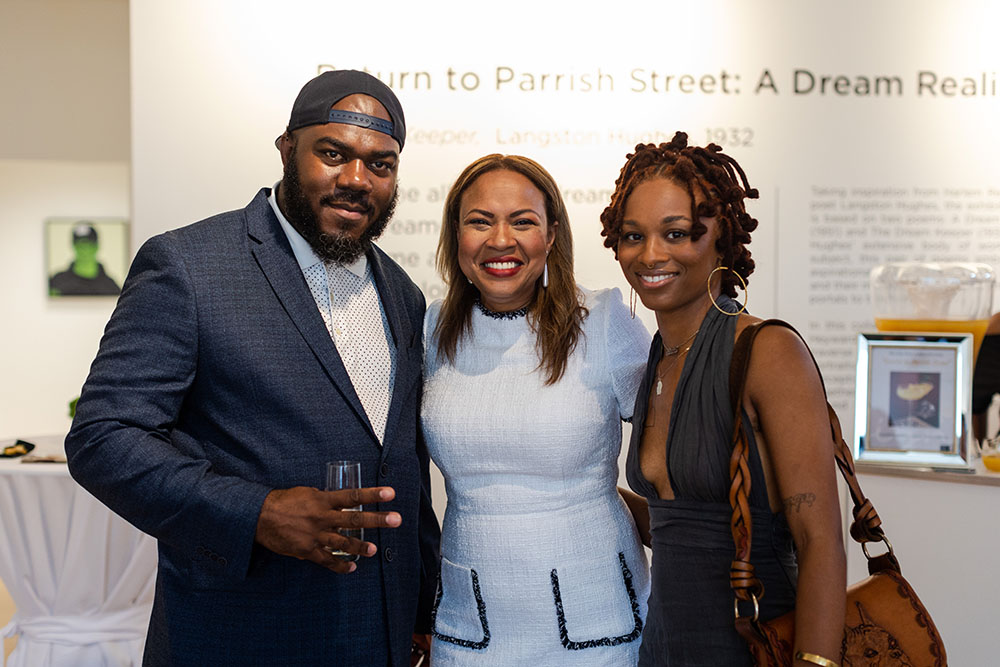
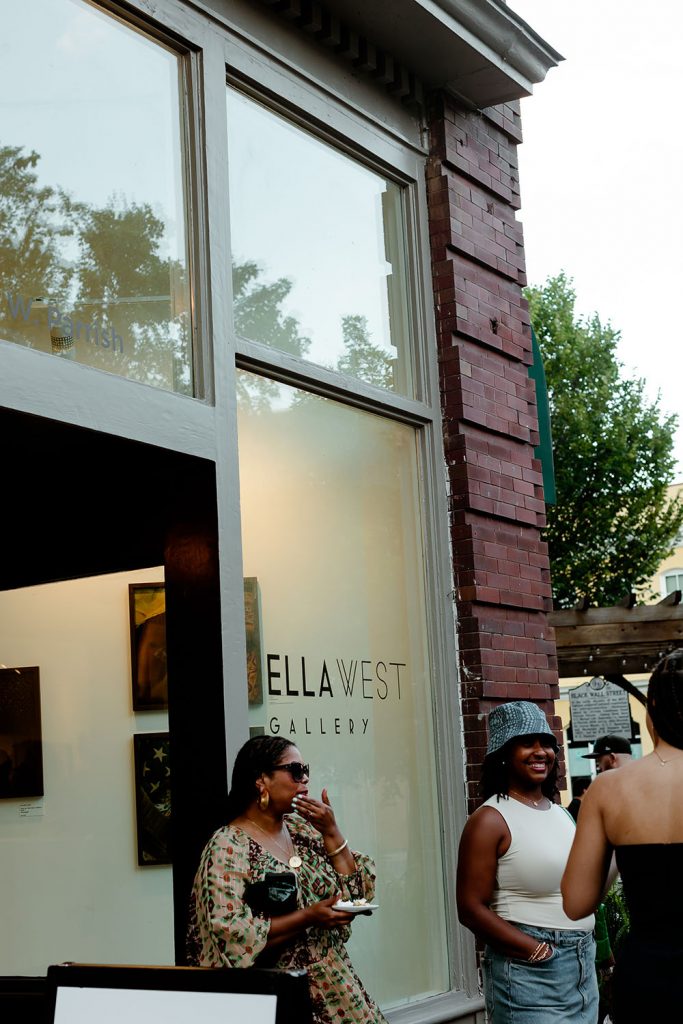
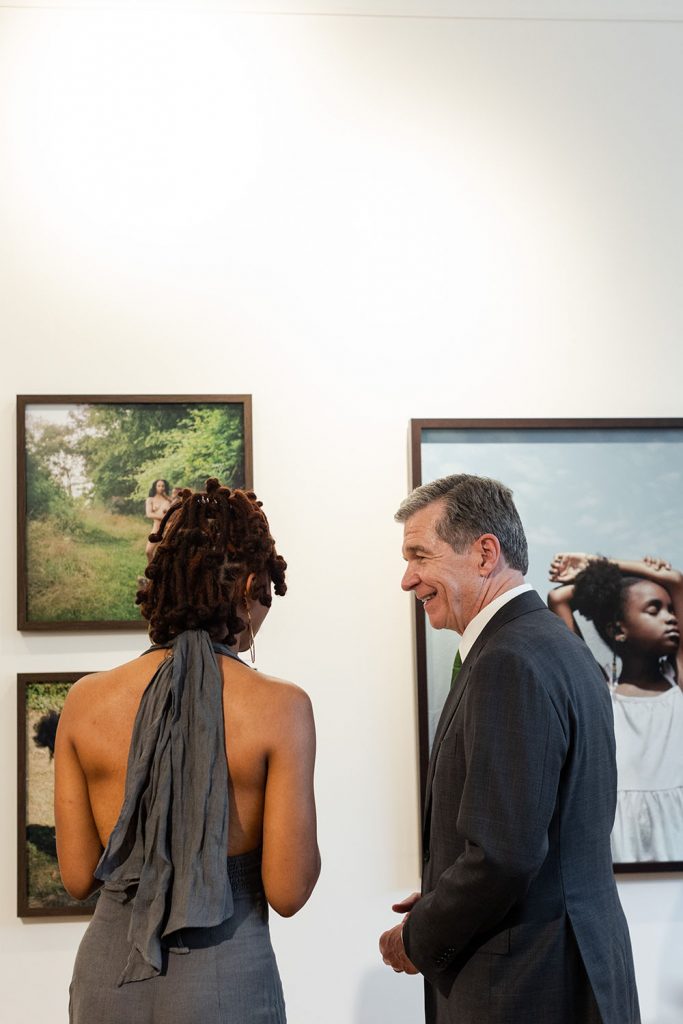
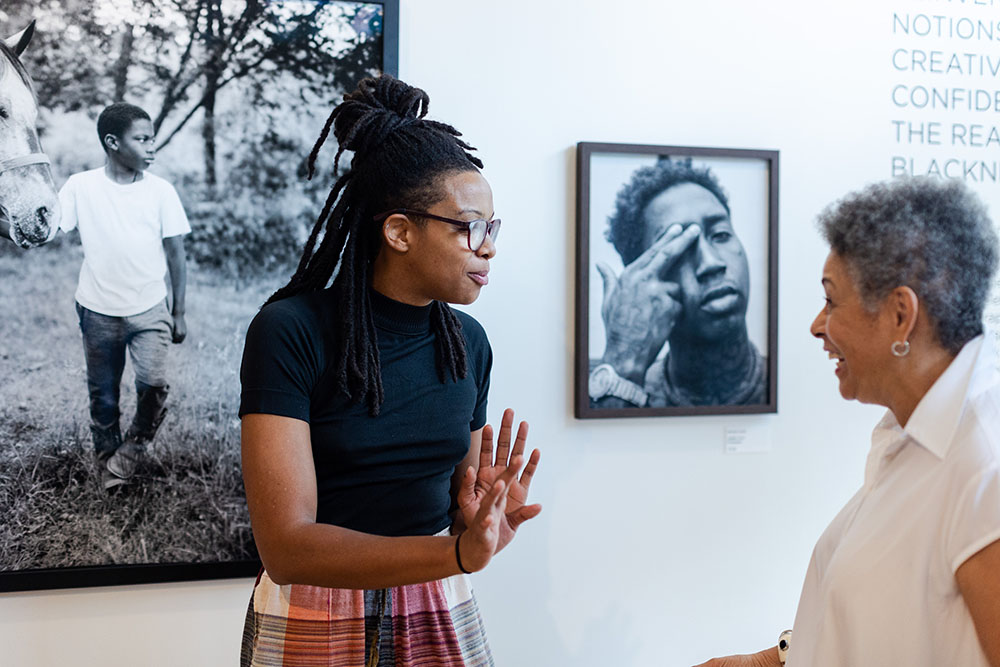

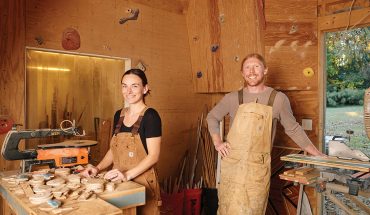
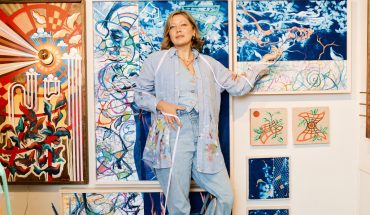

Pingback: Dream Keeper: The Ella West Gallery | Brightgram